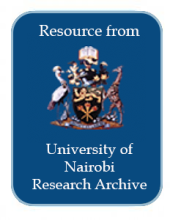/ library resources
Showing items 181 through 189 of 269.At least 20 percent of the Somalian population are refugees, many from Ethiopia.
Field work for this study was conducted between the months of November 1989 and February 1990.
This study was motivated by the need to understand the interplay
between cotton farming in Barwessa and household food security
in the area.
The study was centered on three main objectives:
• To examine the extent to which subsistence farming is affected by
cotton,
This chapter presents and discusses the causes of land degradation, and ways of sustainable land development and agricultural productivity. The evidence presented here suggests several avenues for achieving a world without land degradation.
In the past mines were abandoned after mining activities leaving undesired effects on the landscape and water sources. Numerous accidents occur in quarries across Kenya leading to deaths of 30 people annually.
Rangelands in semi-arid Kenya have recently witnessed extensive land use changes. These changes can mainly be attributed to increased livestock populations and the response of the increased human population to both local and exogenous opportunities and constraints.
There has been tremendous changes in soil use and management in the River Njoro Watershed during the last three decades. Formerly large-scale farms converted into smallholder farms and plantation forests have gradually been lost.
Pagination
Land Library Search
Through our robust search engine, you can search for any item of the over 73,000 highly curated resources in the Land Library.
If you would like to find an overview of what is possible, feel free to peruse the Search Guide.





